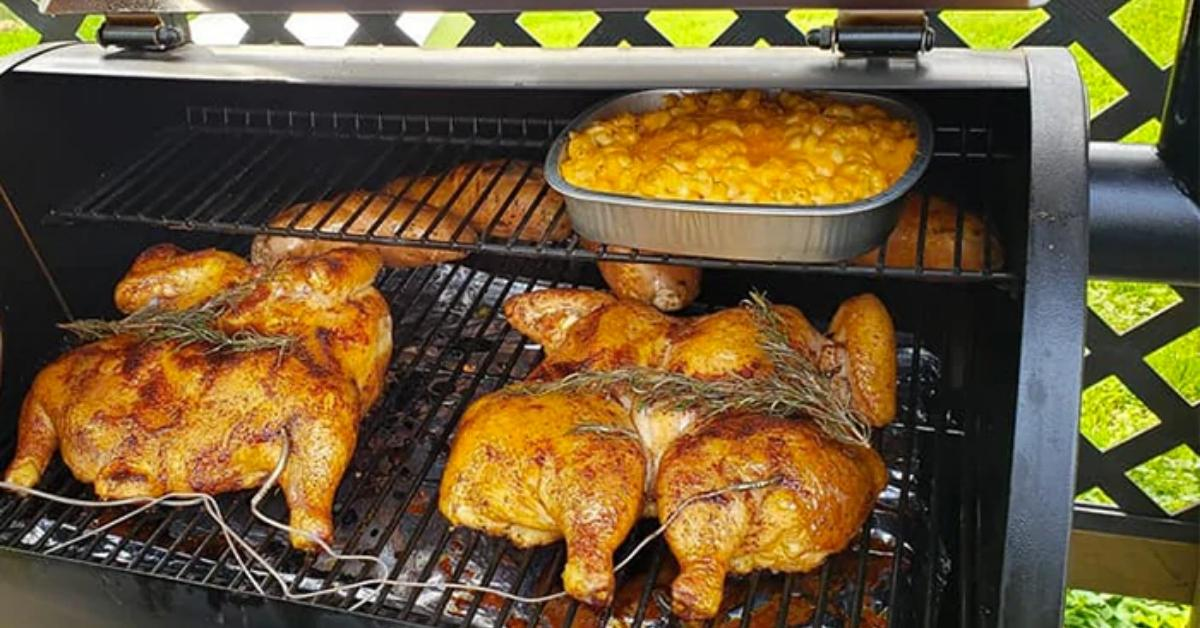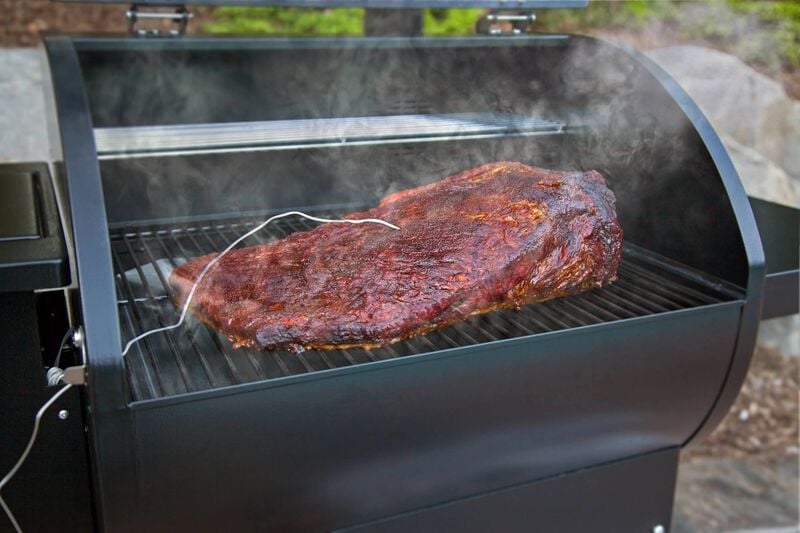How to Place a Brisket on a Pellet Smoker: Exclusive Tips and Tricks
Written By James Morgan
Barbecue enthusiasts know that smoking a brisket can be a life-changing experience. Getting it right requires a blend of art and science because a poorly placed brisket can lead to uneven cooking, dry meat, or lack of flavor. This comprehensive guide will walk you through how to place a brisket on a pellet smoker, offering unmissable insights and approved techniques to achieve that perfect, mouthwatering BBQ.

The Perfect Brisket: What to Look For
The goal of great brisket begins with selecting the right piece. Look for a brisket that's well-marbled, with an adequate fat cap. The marbling ensures the brisket remains juicy, while the fat cap acts as a self-basting layer.
Approved Tips for Brisket Selection:
- Choose a brisket weighing 12-15 pounds.
- Opt for USDA Choice or Prime for better marbling.
- Check for a flexible flat, which indicates tenderness.

Preparing Your Pellet Smoker
Before we discuss how to place a brisket on a pellet smoker, you need to prepare your smoker. Proper preparation can significantly impact the final result of your brisket.
Clean and Preheat the Smoker
Start by cleaning any leftover ash or debris. Once your smoker is clean, preheat it to 225F. Some people prefer smoking at lower temperatures initially, but 225F is a balanced starting point that delivers both tenderness and flavor penetration.
Approved Tips for Preparing Pellet Smoker:
- Always clean your smoker before use to ensure no leftover flavors taint your brisket.
- Use quality wood pellets, preferably hardwoods like oak, hickory, or mesquite for a robust flavor.
- Ensure consistent temperature throughout the smoking process.

Trimming the Brisket: A Critical Step
Before placing your brisket on the pellet smoker, trimming is essential. Trimming helps remove excess fat that wouldn't render down during the cook, providing a more manageable and flavorful piece of meat.
How to Trim Your Brisket
Using a sharp knife, start trimming from the flat end towards the point. Remove any overly thick fat caps, leaving about 1/4 inch of fat. This ensures the fat melts through the meat but doesn't overwhelm it.

Seasoning Your Brisket: The Flavor Foundation
Seasoning is an area where you can let your creativity shine. A simple yet effective rub consists of kosher salt, black pepper, and a touch of garlic powder. This straightforward rub complements the beef's natural flavors without overpowering them.
Approved Seasoning Mix:
- 1/2 cup kosher salt
- 1/2 cup coarse black pepper
- 1 tablespoon garlic powder
- Optional: 1 tablespoon smoked paprika for added depth
Positioning the Brisket on the Pellet Smoker
This is undoubtedly the most crucial step in learning how to place a brisket on a pellet smoker. Positioning directly impacts how evenly the brisket cooks and how juicy it remains.
Fat Side Up or Down?
The debate of fat side up or down is ongoing. Placing the fat side up allows the fat to render down into the meat, self-basting it. However, fat side down can protect the meat from direct heat, making it a better choice if your smoker has a hotter side.
Orientation and Placement
Place the thicker part of the brisket (the point) towards the heat source, as it can withstand higher temperatures. Smooth out the brisket as much as possible to ensure even cooking. Consider using a water pan to maintain humidity and prevent the brisket from drying out.
Approved Tips for Positioning Brisket:
- If your pellet smoker has uneven heat zones, adjust placement as needed.
- Always use a meat thermometer to monitor internal temperature.
- Baste the brisket occasionally, if desired, to maintain moisture.
Monitoring the Cook
Once your brisket is set on the smoker, consistent monitoring is crucial. The key to a perfect brisket is low and slow cooking, with regular checks on the internal temperature. Your target is to reach an internal temperature of around 203F for optimal tenderness.
Approved Tips for Monitoring:
- Use a reliable meat thermometer, preferably with a probe you can leave in the meat.
- Look for a plateau, commonly known as 'the stall,' where the temperature may stick around 165F for an extended period.
- Be patient; never rush the process.
Resting and Serving: The Final Steps
After all that effort learning how to place a brisket on a pellet smoker and monitor it throughout the cook, don't forget to rest it. Resting allows the juices to redistribute throughout the meat, making every bite tender and flavorful. Wrap the brisket in butcher paper or aluminum foil and let it rest in a cooler for at least one hour.
Approved Tips for Resting and Serving:
- Always slice against the grain for maximum tenderness.
- Try to trim off the excess fat before serving.
- Pair your brisket with complementary sides like coleslaw or baked beans.
FAQ
How long does it take to smoke a brisket?
It generally takes around 1 to 1.25 hours per pound of meat at 225F. Therefore, a 14-pound brisket can take approximately 14-17 hours.
Do I need to wrap my brisket while smoking?
Wrapping your brisket, often referred to as the Texas Crutch, can help get through the stall faster and retain moisture. Most people wrap their brisket in butcher paper or foil when it reaches around 160-170F.
What's the best wood to use for smoking brisket?
Popular choices for smoking brisket include oak, hickory, and mesquite, each providing a robust and distinctive flavor to the meat.
As an Amazon Associate, I earn from qualifying purchases.
Mastering how to place a brisket on a pellet smoker can make a world of difference in your barbecue endeavors. By following these steps and tips, you'll be well on your way to smoking a brisket that not only meets but exceeds expectations. Happy smoking!
For more detailed guidance on brisket and smoking techniques, check out our guides on burnt ends, mac and cheese, and health benefits. For even more tips and tricks, visit Traegers guide.



